- Hookaroon vs Pickaroon - August 8, 2022
- Best 24 Inch Chainsaw Options Guide: Which Is Right For You? - July 16, 2022
- Husqvarna 455 Rancher Review and Guide - May 2, 2022
Today’s topic is quite interesting. Today we are talking about spalted maple – one of the beautiful woods around. In our guide to Spalted Maple Wood Uses, we’ll be providing you insights about – what is spalted woods? Where can you find spalted maple?
Moreover, we’ll provide exposure to Working on the Spalted Maple, Things you need to know before using it in your next project, and concluding with some frequently asked questions.
At first, let’s take a look at some of the basics of Maple trees.
Maple Trees
Deciduous woody plants with massive trunks – The Maple Tree is one of the most common tree species in the world. Maple trees include several tree species in the genus Acer. These upright trees with a dense canopy and pleasant leaf color are famous for shade, street, and specimen trees.
Apart from almost 60 different species of maple trees, only a handful are cut into timber or lumber. It’s imperative to know the basic characteristics of Maple trees – which brings us to another heading – identification of Maple trees.
Identification of Maple Tree
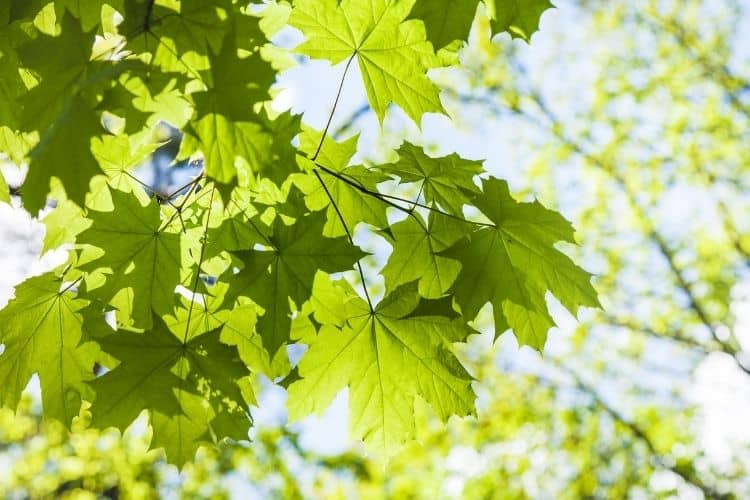
Woodworking at the beginning is tough if you can not exactly identify the tree. The leaf of a Maple tree is the most popular character that any layman would know of. However, here’re some more to it including trees’ size and shape, fruits, and barks.
Tree Size and Shape
The size and shape of Maple trees vary with the variety. Generally speaking, the size at maturity of the tree ranges from 50 to 75 feet. At home landscapes, can be made smaller to about 20 to 30 feet. These trees characterize horizontal branch formations leading to spreading and rounded canopy.
On contrary to other Maples, sugar maple sometimes form a conical shape and red maple has a pyramidal canopy.
Leaves
The leaves of Maple are the distinct ones also known for their brilliant fall leaf colors. You’ll notice lobed leaves that change their fall color to yellow, red, and orange.
Bark
When young, the barks are smooth gray-brown. Older trees are fissured with long and irregular flakes.
Fruits
Since the Maple tree is deciduous, all of them produce seed pods. The distinguishing feature of the fruit character in the Maple tree is that it takes the shape of a double-winged s. These pods usually contain one or two seeds.
What is Spalted Maple?
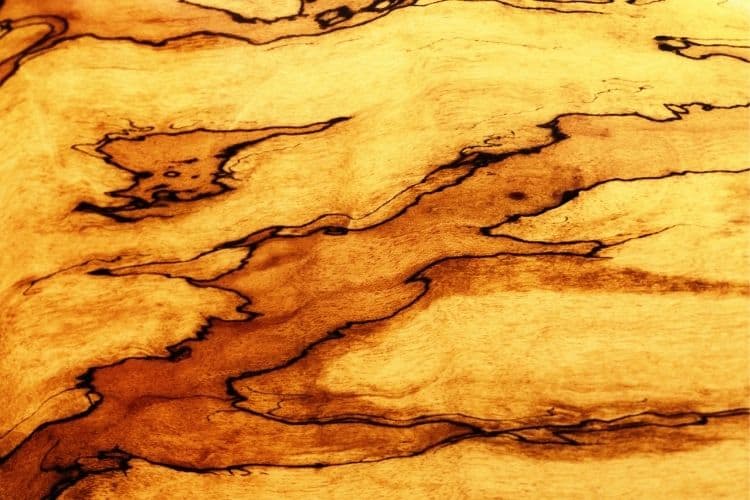
The name spalted Maple does sound intriguing but it’s just a partially rotten Maple. Technically, spalted Maple is not any other species, but just a Maple tree allowed for initial decaying. Many people name it “nature’s art” which happens when fungus penetrates the Maple. It looks like somebody took a pen and drew random lines around.
You’ll see distinct vein patterns (figuring) in Maple woods also known as zone lines. It can occur in standing trees, in logs after it’s been cut and laying on the ground for a while, and also in milled boards if they are stored improperly.
So the thing is if the wood is kept in a damp place conducive to mold, spalting can occur in almost every wood species. The most common spalted wood is of Maple, Poplar, Cherry, and Walnut sometimes.
The attack of different fungus on a single log can develop to random patterns of inky-black lines. Each of these fungi causes different effects creating a mix of colors and patterns.
Having said that, too much infiltration of fungus on wood will destroy them. Has the wood been rescued from spalting at the right time, there would be beautiful patterns with no rotten woods.
Things to Watch Out For
It’s always better to know your wood before starting your very own projects. You must be very clear about the do and don’ts – positive side and downside. This is what we are going to explain to you.
Proper Handling
As we mentioned already, the spalted maple contains fungus which means the wood is still delicate and soft. Since it’s very vulnerable and more likely to damage, you must be very careful while handling it – you don’t want to spoil the figures, do you?
Issues With Stability
In addition to handling, there are other major issues to deal with – stability being one of them. The fact that the maple is partially rotten makes it more spongy around the black lines.
Many woodworkers complain this has caused problems with joinery such as dovetails. They’ve also mentioned the issue of fiber crumbling.
However, this issue can be overcome by fortifying those fibers with glue or other hardners.
Change in Pattern with Depth
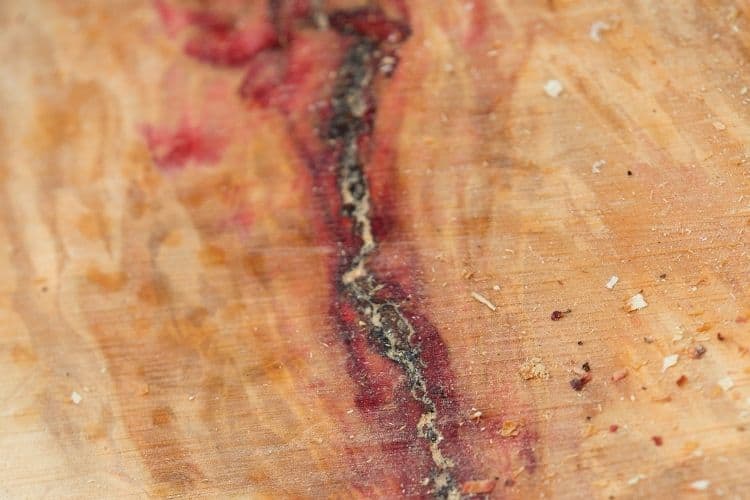
Yes, Spalted maple is one of the finest art nature can offer you but there is one major drawback of its pattern. And that is – its spalting occurs from the bottom of the tree which doesn’t get very high.
If you wish to make full-length boards on a tabletop or thinner slices for veneer, you might not be impressed with the pattern. This is because the deeper you cut the board, the less pattern you’ll receive.
The dramatic changes in the pattern can even diminish as you slice. The ultimate result of this will be difficult to book match the panels of spalted Maples.
Issues When Sand
Another thing to watch out for when working with Spalted maple is the dust coming from the black lines. There will be dust when you sand the Maple. Most of the time it will occur to you the dust becomes embedded into the spongy fiber thus changing the wood color to a gray appearance.
Some people use CA glue as a remedy for soaking those areas to harden them and keep that black-out. This will for sure also help you resist the uneven finishing.
Seal the End
The thing you need to do as soon as you cut one of the spalted Maple logs is sealing the end. All you need to do is apply lacquer or water-based varnish on the cut.
Especially if you are working with a living tree, you want to do that as quickly as possible. The reason behind this step is the moisture of the woods comes wicking out the ends and dries too quickly. The process of this ultimate drying and wetting may result in a crack.
It may not necessarily prevent the cracking but once you seal both ends of small logs, cracking will be reduced by a large amount.
Use Sharp Tools
Special attention should be given while sanding, grinding, or using any other tools on spalted Maple. Since fiber is way softer than normal woods, you might be taking off too much at a time.
Tear-out is the last thing you want to deal with in any woodworking project. This is why you must be sure that the tools are sharp and work according to your cutting desire.
Uses of Spalted Maple
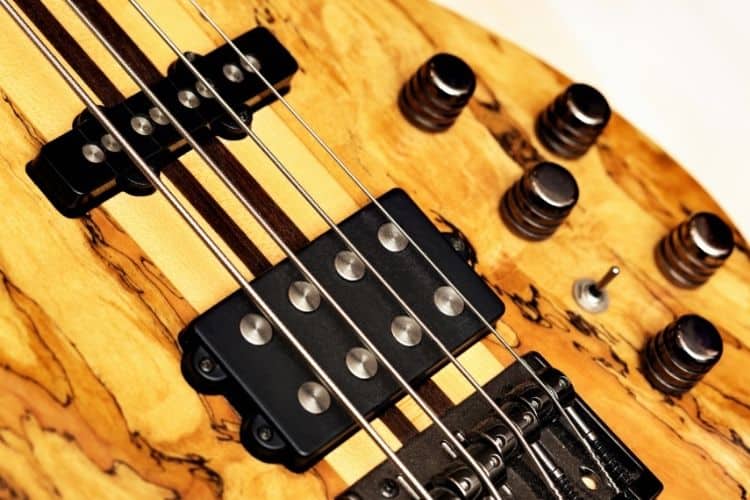
Like any other wood piece, Spalted Maple is used for various woodworking purposes. What appeals the most is its stunning patterns and textures – making them high in demand for furniture, veneers, woodturning, and carving.
It is also one of the most preferred wood in making Guitar for its more dynamic three-dimensional look. This is because of the high contrast between the spalting and normal grain.
What may bother you while using this wood is – it is sustainable? And Is it durable? Let’s tell you this, you do not need to worry about this anymore.
The reason we are so sure about it is that, once you completely air-dry the spalted wood there is no chance fungus is still viable. An increase in dryness is directly linked with the sustainability and resonant tone.
Coming to durability, before using spalted Maple for any of the projects, make sure you completely remove the moisture. Once the moisture is removed, the fungus is now stabilized. Any projects with Spalted Maple will last long if you keep this in mind and work accordingly.
The process of moisture removal in Spalted Maple is longer than in other woods but we must say it’s worth the wait.
How Can You Make Spalted Maple on Your Own?
Spalted Maple does attracts every one of you for sure. I mean with the dramatic pattern of amazing black lining who would not get impressed? Some woodworkers, besides natural spalted woods, make their own spalted pieces for the bigger projects.
Before explaining the topic, we recommend you go through various guides, books, and journals – because the temperature and humidity may be different in your place. But here’s the zest of what the DIY of Spalted Maple includes.
Step 1. Stage Your Environment
After you pick up some nice light-weighted Maple for spalting, the next step you move on to is setting the environment. Fungi thrive well in moist and humid environments.
Many woodworkers are found to use a container as a growing environment for fungus while some of them found plastic seals to be the better option. Whatever may be the choice, just make sure that it’s not completely sealed, there is enough humidity, and there is some way for oxygen.
Step 2. Medium for Fungal Growth
Mediums that are responsible for developing fungal growth mostly include nitrogen, organics, and sugar. These ingredients will expedite the spalting process.
You can use fertilizers, manures, vermiculite, coffee, or even beer for your growing medium.
Step 3. Add the Wood
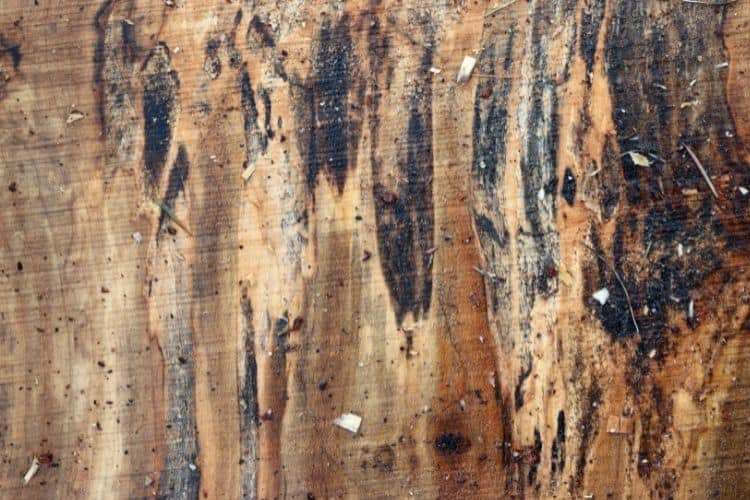
There are two different approaches to this step. Either you want to wait few weeks for fungus to grow and then add the wood or you just add the wood and fungi at the same time.
Starting the action from the end grain, fungi will now slowly act upon your Maple log. It’s better to try this technique with smaller test pieces first. It would be easier for you to check the whole process before actually moving your large piece of wood.
Step 4. Final Step – The Waiting Game
Hopefully, if everything is under control and you have the right conditions for growth, check your container after the first 5-6 weeks. If you see any progress then keep checking every 2 weeks after until you get the desired effects.
Make sure you are checking the wood periodically as the process can affect the wood at its weak point.
Once you feel like – “that’s the piece I ranted”, take out the wood and clean it. Remove all the soil or debris from it and air dry it before using.
How to Buy It?
Maples are not so rare but Spalted Maples are hard to find. The reason behind this is because lumberyards reject the piece because of its unpredictable and inconsistent properties. If you’re are ready to dive into Spalted Maple and are interested in working with it, specialty woodworking suppliers can help you with the workpieces.
We do not recommend you to shop online because that can be worse. It’s always better to see it in person – the pattern, the texture, the color, and the condition of the wood. One thing you must be very clear about it the wood should be free from cracks.
For bigger projects like tabletop or bench, you want to buy a larger board or a slab. In such a situation, you want to examine the entire board closely if it’s usable.
Frequently Asked Questions
Question: What are Hard Maple and Soft Maple?
Answer: Hard Maple is one of the most common Maple varieties – probably the one that you think of when you hear Maple lumber. Also known as Sugar Maple or Rock Maple, Hard White Maple has the hard and white sapwood of the Maple family.
In addition to the tapping maple syrup, it is also known for its incredible strength. This is why they are used in bowling alleys, dance and gym floors, flooring, furniture, and cabinets. The fact that it is white is because it’s got a big band of sapwood comparative to that of heartwood.
Soft Maple, also known as Red Maple is softer than Hard Maple. The downside of this Maple is that it is not as clean as white Maple. The sapwood of this Maple is generally darker in appearance and is best used as lumber, veneer, paper pulp, furniture, and pallets.
Question: How Should I finish the Spalted Maple?
Answer: The moisture content in Spalted Maple is high, so it’s always better to start your project by drying the wood. Some people doubt if they should apply fungicides before finishing. The answer is no, once you dry the wood, fungal growth stops.
To avoid uneven finishing, dip the wood on CA glue – hardens the soft spots. Once the glue has dried, sand your workpiece, and apply a water-based finish.
Question: Should I Stain the Wood?
Answer: Staining the wood is solely upon you – whether you want a yellowing color or a non-yellowing one. But many woodworkers and we too suggest you not to stain the wood. Clear patterns of Spalted Maple are always better than yellow-coated ones.
Conclusion
Spalted Maple is something that gives you the pleasure of showcasing your wood crafts. Again, the amazing patterns are what steal the show.
Reports are found that the dust of the Spalted Maples is harmful to human lungs due to the presence of fungus. That’s why we suggest you wear protective gear, especially a mask while working with them. These woods are vulnerable to tear-outs, make sure you use sharp tools on them.
We hope this guide succeeded to clear your doubts about the durability, stability, and sustainability of Spalted Maple. For more related tree and wood guides, please reach out to The Forestry Pros.

